Too hard, too easy, too intrusive, too hidden… Monetising games with ads while keeping a player coming back for more can be a minefield of conflicting views and options. So why not learn from the best?
In this guest post, Rovio UA lead Claire Rozain uses their own Angry Birds Match as an example of where years of brand-building and the study of player psyche were brought to bear to make another successful spin-off.
Angry Birds Match is a beautiful game where you need to beat levels to help rescue the Chicks from the Piggies and grow your flock of adorable Hatchlings. The game is crafted by Rovio using the world-famous Angry Birds IP and is a great example of how a strong game will enjoy an enduring gaming lifespan. It's available on Android and iOS.
My name is Claire, I work on UA for the long tail portfolio at Rovio and I have had the pleasure to work with Janne Immonen and the team on this stunning game.
The USP of Angry Birds Match is: Explore worlds and collect Hatchlings in this adorable match 3 puzzle game!
In this article we’ll cover:
• What is Angry Birds Match?
• What are the product strengths of Angry Birds Match for advertisers?
Puzzles are a balance between mechanics, level design, narrative, difficulty, inclusivity and progression and each of those aspects can be used to empower advertising. I am a true believer that when a marketer is able to recognize those strengths in a game and collaborate with the design team, then fake ads are not necessary.
What is Angry Birds Match?
Angry Birds Match is a completely free-to-play game with optional in-app purchases available alongside in-game advertising. In the game you play with Hatchlings and Blues. The Hatchlings are my favourite characters, being the newborn little birds that are featured in The Angry Birds Movie.
In this match-3 adventure Rovio has crafted a game where matching items accomplishes missions for the Hatchlings.
The game has been out since 2016 and was at first soft launched in Finland, Australia and Canada. The global launch happened in August 2017. For me, this means that I work on a game that MANY masterminds have already worked on and this is an awesome opportunity to learn and optimise the portfolio effect for Rovio.
What are the Product strengths of Angry birds match?
Elements
For ads, we value elements that are “marketable” and Angry Birds Match is mastering marketability of in-game design with several elements (listed below) such as Boosters and Creative which are inspired by a wide spectrum of puzzle challenges to solve.
Boosters
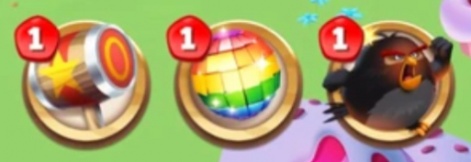
From my experience, boosters are often creative elements triggering a click in user acquisition. Angry Birds Match provides a few really nice ones to test including Hammer, Disco Dall and…. Bomb! What is really special in Rovio games is the quality of the interpretation of our IP in our games. Having Bomb as a Booster in the game is, for me, a real creative game-changer, allowing a lot of creative possibilities, especially for ads.
Level starters are also really important and play into the narrative. At the start of each level you have the opportunity to begin with Red, Chuck, or Bomb for instance. Compared to some other games, this is way less boring than beginning a level with a specific character on my board with only an additional booster. From a creative perspective it also allows us to have a lot more flexibility on what we can think about. See below how emotional the boosters can appear. They reflect a lot of emotion and are thus really interesting to use either in ads or while playing.
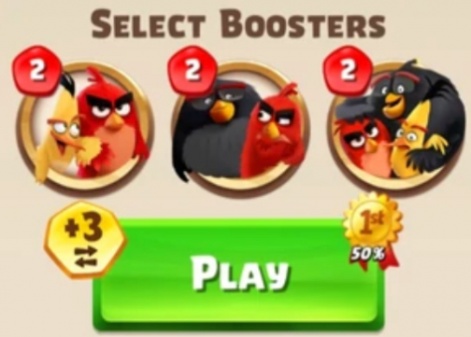
Creative
Creativity wise the main aspect of the game I enjoy advertising on, and which are, from my perspective, a real advantages for advertising that the game possesses, are its decoration elements, character personalization, puzzle mechanics, and rescue hatchlings missions.
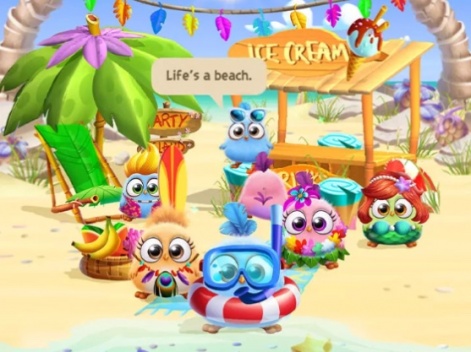
For now let’s focus on the solving of puzzles and the emotions associated with them.
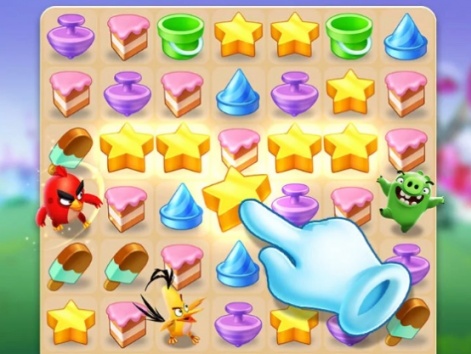
Solving Puzzle Challenges
Puzzles are all about balance, either in ads or in the game. There is currently a myth in advertising, especially around the famous “can you do better?” trend, that the best-solving ads may be the ones the user never solves. In Angry Birds Match the ads simply show the levels, and the levels simply show the game balanced around the pillars of:
• Mechanics
• Level design
• Narrative
• Difficulty
• Inclusivity
ª Progression.
… That’s all! (more on inclusivity here)
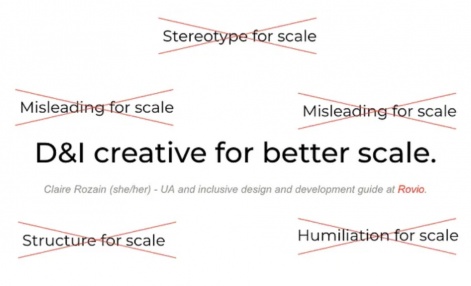
As with a good bottle of wine even emotions need to be balanced, diverse and authentic in order to appeal to your player because YES you want to appeal to an algorithm but you should always think about your player FIRST.
Paul Ekman identified what can be called ‘The Emotion Lens’ which features seven universal emotions across all cultures. According to him, fun would not be included... So why are ads in the gaming market trying to trigger it?
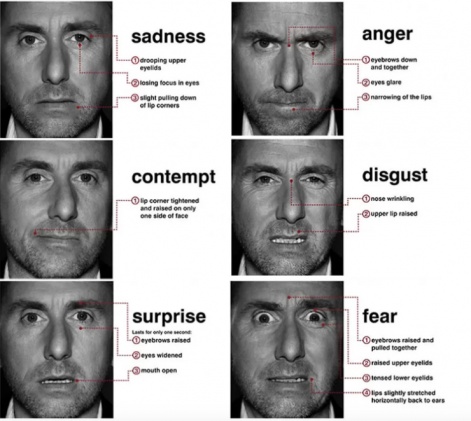
When an advertiser tries to trigger only one emotion with an ad they are aiming to start a cognitive mechanic process converting one emotion into another with a game or a design.
Using exclusively in-game ‘fails’ or ‘wins’ is restrictive and is a bias that may make your user feel excluded from your targeting. We tend to omit and exclude some emotions on the spectrum and step by step exclude some potential spenders by reading data coming from algorithm bias. In order to counterbalance our own or even algorithm bias it is often appropriate to remember that:
Puzzles are a balance between mechanics, level design, narrative, difficulty, inclusivity and progression. Each of those aspects does empower my advertising. I am a true believer that when a marketer is able to recognize those strengths in a game and collaborate with the design team - fake ads are not even necessary.
A useful tool to use is the core emotional space with presentation of motivations to approach or avoid a stimulus based on (Russell, 1980) and (Mendl et al., 2010).
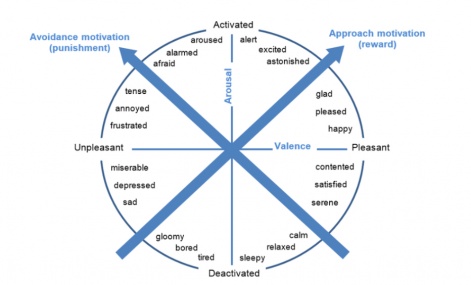
In order to apply this principle, making puzzle games attractive to a diverse range of spenders I usually like to refer to this tool. Then, instead of reducing my creative spectrum, I am able to consider the scenario from a different angle.
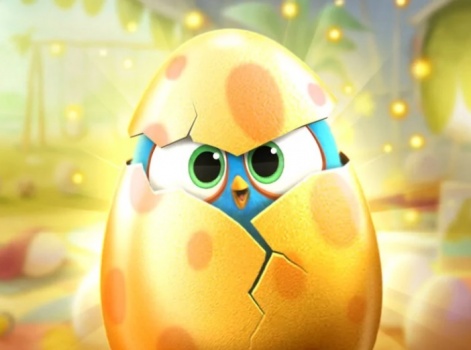
I hope you enjoyed reading this. Feel free to contact me on LinkedIn if you have any feedback. And do play Angry Birds Match as it’s an awesome game that I enjoy playing and learning from as part of my daily work routine!
Sources:
Precision of Emotion: A New Kind of "Fun" Approach in Educational Games






















